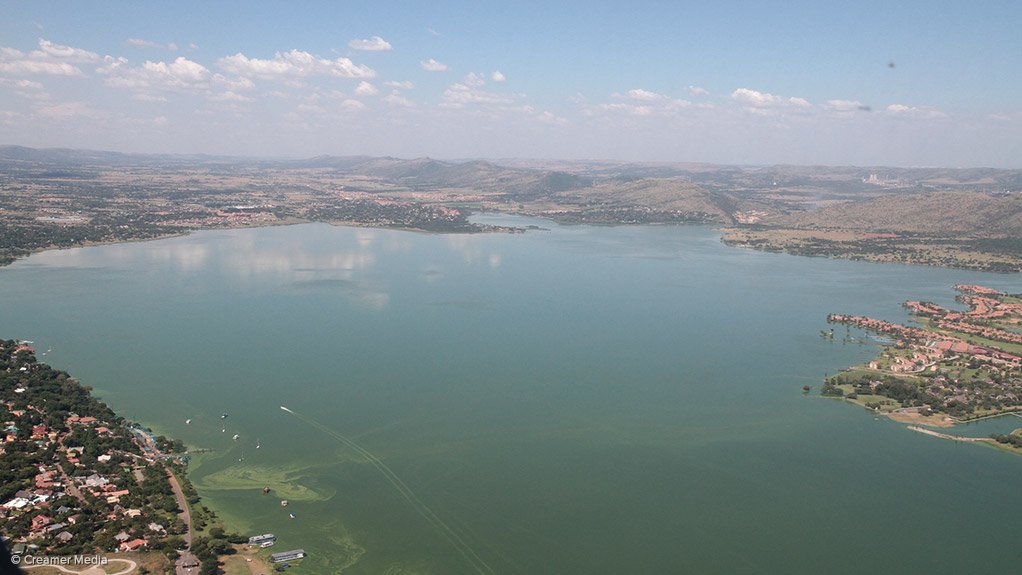The Water Research Commission (WRC), the Department of Water and Sanitation (DWS) and the Department of Science and Technology on Friday released a report showing the potential of a new project to monitor cyanobacteria blooms and eutrophication in South Africa's fresh waterbodies.
The 'Integrating earth observation into the National Eutrophication Monitoring Programme (EONEMP) used remote sensing to allow the monitoring of the large and medium-sized waterbodies at unparalleled spatial scale, frequency and consistency.
The project fed into the DWS National Eutrophication Monitoring Programme (NEMP) to support a strategy to control eutrophication, or nutrient enrichment of surface waters.
"Many South African waterbodies are nutrient enriched, and consequently exhibit negative symptoms associated with eutrophication, such as harmful cyanobacteria and algal blooms, and growth of aquatic water weeds, such as water hyacinth," the report outlining the outcomes of the programme said.
While the NEMP programme has been successful, further enhanced monitoring is required, along with an adaption to the use of new technological advancements.
Remote sensing, and the obtained data, will optimise the NEMP's monitoring network and streamline its activities.
The data generated will improve the abilities of the programme to manage and mitigate the harmful effects of potentially toxic cyanobacteria blooms and nutrient enrichment that are so widespread across South Africa's dams.
"We are continually trying solve twenty-first century problems with twentieth-century technology and, even worse, nineteenth-century operating rules," said WRC CEO Dhesigen Naidoo.
Speaking at the release of the report, he explained the need of the water sector to take advantage of the fourth industrial revolution already underway, adapting to a" much easier" way of managing complex resources, using the tools of the new revolution.
WRC's Dr Shafick Adams said, however, that the current data system is broken, leaving the country unable to manage what it can not measure.
The use of remotely sensed information in conjunction with ground-based data can allow for strategic and efficient decision-making. Neither can be used on its own effectively.
DWS's Ndileka Mohapi said that, as much as it can be measured, the underlying issue is how the problem can be resolved, and what is done with the results received.
Remote sensing-based water quality measures can better contribute to managing the risk of the vital national resource, she said.
The EONEMP project aims to unlock the necessary research and develop the tools needed to make routine operational monitoring on a national scale a reality.
The WRC-commissioned project that had started in April 2015 through to March 2018 showed the benefits of adding an earth observation approach.
The three-year, R3-million project had set out to improve the monitoring of the health risk from cyanobacteria and eutrophication in a large number of South Africa's waterbodies through the disseminating timely and accurate information and to integrate the information into the national monitoring database.
In line with this, an online near real-time monitoring service website was developed to allow near real time data to be viewed, accessed and downloaded.
The estimates obtained from satellite had been integrated into the water management system to plug information gaps and enable the full potential of satellite monitoring to be realised by national, regional and local government authorities.
Project leader Cyano Lakes Mark Matthews said that, of the combined total surface area of 102 waterbodies reviewed over 2016/17, 13% posed a high or moderate health risk from cyanobacteria blooms, 8% posed a mild risk and 79% posed a low or zero risk.
According to the report, 35% had been hypertrophic, or heavily polluted, 27% eutrophic, or polluted, 13% mesotrophic, or acceptable and 26% oligotrophic, or pristine.
Some 62% of South Africa's major surface water resources are polluted, he said.
EMAIL THIS ARTICLE SAVE THIS ARTICLE ARTICLE ENQUIRY
To subscribe email subscriptions@creamermedia.co.za or click here
To advertise email advertising@creamermedia.co.za or click here











